TRADITIONAL VALENCIAN SPONGE CAKE: COCA DE LLANDA
In this blog you can find any sweet treats, and I can tell you that the Traditional Valencian Coca de Llanda is the perfect olive oil sponge cake: fluffy, easy to bake, and with a delicious touch of lemon. This Mediterranean sweet coca (sponge cake) is a traditional delight from Valencia, a Mediterranean area in the East of Spain, with a beautiful coast and very well know for their gastronomy. In Valencia you can enjoy the best paellas and of course, the spongy coca de llanda.
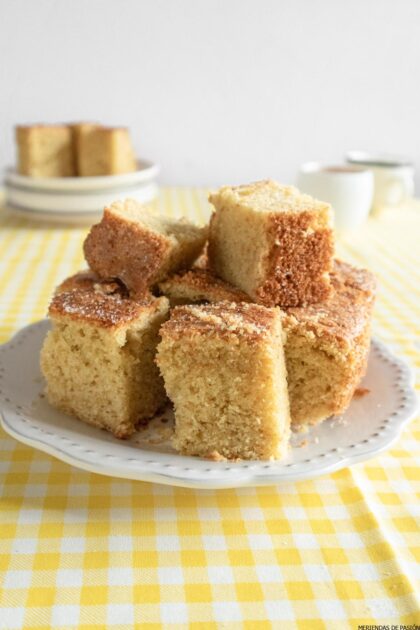
What is so special about the traditional coca de llanda?
This traditional recipe is a very spongy cake that is made with ingredients that anyone can find in our pantry: eggs, sugar, all-purpose flour, lemon, sugar and olive oil.
Its name “coca de llanda” comes from the oven tray in which this rectangular-shaped coca, called llanda in Valencian, the language in the region of Spain where it has traditionally been baked.
Coca de Llanda’s origin is unknown, it is believed that it was baked as a sweet treat with the ingredients that were available at home at Valencian homes.
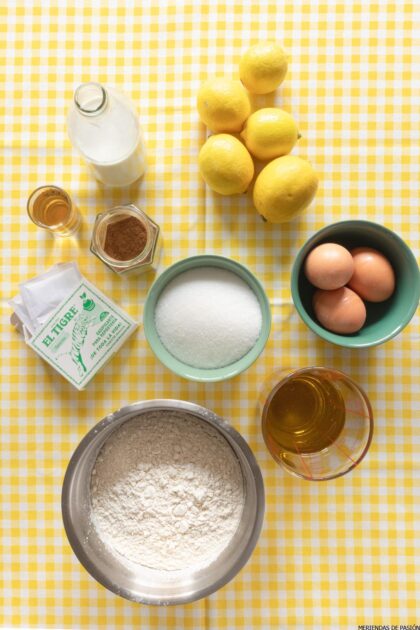
Valencian Sponge Cake, Coca de llanda, Coca boba or coca malfeta
Looking for Valencian Sponge Cake recipes probably you were surprised by the different names you can see in Spanish or Valencian when talking about this sponge cake, that is because Coca de llanda is also known by many curious and traditional names like coca boba, coca de mida or coca malfeta that means “not very clever cake, or not very beautiful cake”.
Why? Because it is so easy to make, and sometimes it is considered to have such a simple appearance, just a rectangular cake without any special frosting, that it is traditionally known in the area as coca boba.
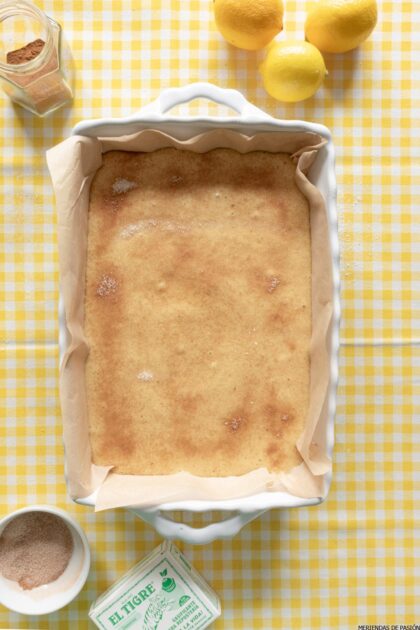
How to bake coca de llanda or Valencian Sponge cake?
This coca recipe is so easy to make that you simply need to have all the ingredients at room temperature to guarantee a good result.
We will begin mixing the eggs and the sugar until they whiten (have a spongy texture).
Then we will add the olive oil and mix again.
Finally we will add the lemon zest and sift the flour and the baking soda to get the perfect mixture for our fluffy Valencian Sponge Cake.
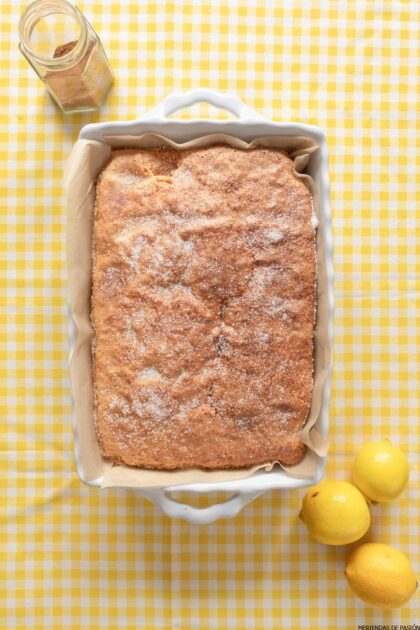
Olive Oil Valencian Sponge Cake
Typical sponge cake from Valencia or coca de llanda is baked with olive oil instead of butter, so it’s the perfect lactose-free sweet recipe if you bake your coca with lactose-free milk or if you just want to explore one of the most delcious olive oil cakes.
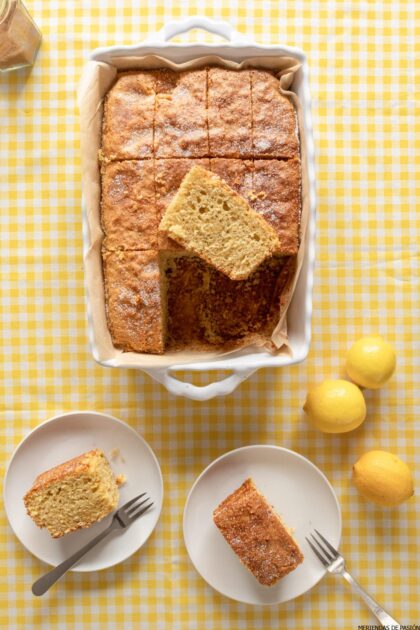
The rectangular mold in the “coca de llanda”
Traditionally the Valencian coca has been baked directly on the baking tray that was in the homes (called llanda in Valencian language).
Nowadays, although of course you can bake it on your baking tray, you can use an elongated mold or dish with high walls so that your coca de llanda can rise. In the photos you can see that to bake this recipe I have used a baking tray of 31×23 (6 cm deep) lined with baking paper.
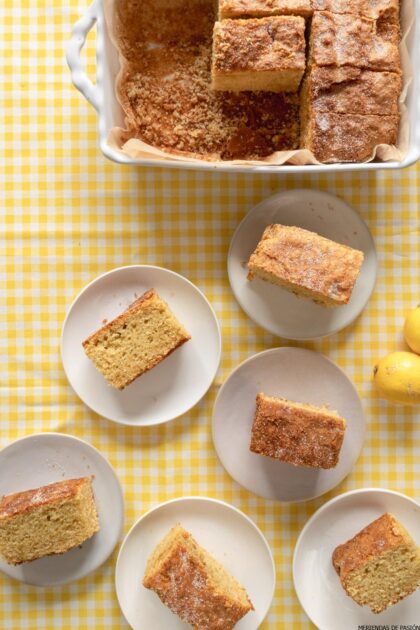
Gaseosillas, the baking soda to bake coca de llanda.
Gaseosillas or Spanish baking soda, are the raising agent in this recipe. Gaseosas act like baking powder acts in other traditional cakes, and is very typical to use baking soda packed in two little envelops (one baking soda, one leavening acids) in the coca de llanda.
When baking red velvet, for example, you use baking soda and vinager to make it react together. That’s the special about Spanish gaseosillas; you have two small envelops, the one with the baking soda and the one with the citric acid to make it “react”. In the following paragraphs you will see how to easily replace gaseosillas with baking soda, and baking soda with baking powder.
It is common to find El Tigre baking soda in Valencia, which are found in many supermarkets and have been manufactured in Cheste, Valencia, since the 1930s.
How to replace baking soda with baking powder?
If you can’t find Spanish gaseosas you can use Baking soda: To bake our coca de llanda we will need 15 grams of baking soda and ½ teaspoon of lemon juice to activate it (same as 3 gaseosilla envelopes)
In general, if you can’t find baking soda you can replace it with baking powder: To replace the baking soda, in case it is not easy to find them, we can add 4 grams of chemical baking powder for every 100 grams of flour.
In this recipe an envelope of 16 grams of baking powder is the equivalent of 3 sachets of baking soda that we use (4 grams of baking powder per 100 grams of flour in the recipe).
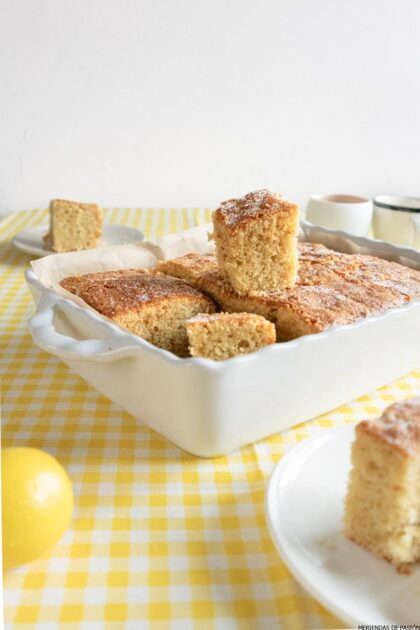
Are coca de llanda and magdalenas valencianas similar?
Yes, the taste is very similar, so if you are fan of the spongy magdalenas valencianas with their caramelized sugar surface and their soft lemony flavor, you are going to love the coca de llanda.
How to serve coca de llanda?
This spongy sponge cake is perfect to serve for breakfast or for your mid evening snack time (merienda) and you will enjoy it with a good hot chocolate, with a cold glass of milk, or why not? a fresh Valencian horchata in the hottest months.
If you do not know the horchata is one of the most famous recipes in Valencian cuisine, it is a refreshing drink made with fresh tigernuts and is widely consumed in the Spanish Levante during the summer months.
Traditional Valencian Sponge Cake: Coca de Llanda
Equipment
- Bowl
- Whisk or Kitchen Aid
- Oven
- Baking pan or baking tray 31x23 (6cm deep)
Ingredients
- 1+1/4 cup White sugar
- 3 tsp Baking soda
- 1/4 tsp Lemon juice
- 1 cup Whole milk
- 1 cup Olive oil Soft
- 1 tbsp Olive oil Soft
- 4 cup All purpose flour
- 2 tbsp All purpose flour
- 2 tsp Rum or cognac
- Zest of one lemon
- 1 pinch Salt
Decoration
- 3 tbsp White sugar
- 1/2 tsp Cinnamon
Instructions
- Start by preparing a square or rectangular mold with enough bottom for our spongy coca de llanda can rise (about 4-6 cm- 2, 35 inches high).
- You can prepare the mold with baking spray, olive oil or parchment paper that can stand up from the sides of the mold, so it will be easier to unmold our coca.
- Clean well the lemon peel we will need for the lemon zest and the 1/2 spoon of lemon juice (we will add 1/2 lemon juice if we bake with baking soda instead or gaseosillas).
- Preheat the oven to 180º Celsius (355º Fahrenheit) with heat up and down.
- In a bowl mix the eggs with the white sugar and the lemon zest with the help of a whisk or electric beaters (like KitchenAid) until they whiten and are perfectly integrated.
- Add the olive oil, ½ teaspoon of lemon juice and the rum to the mixture of eggs and sugar and mix again with your whisk or electric mixer.
- Then add the milk to the mixture and beat again.
- Sift the flour and the baking soda that we will gradually add to the mixture of eggs, milk, oil and sugar and beat again.
- Place your coca de llanda batter in the mold that we have previously prepared.
- Mix in a bowl 3-4 tablespoons of white sugar and ½ teaspoon of cinnamon.
- Sprinkle a generous layer of the sugar and cinnamon mixture over our coca de llanda batter.
- Bake for 25-35 minutes depending on the oven, until the surface of our olive oil sponge cakeis golden brown, and a toothpick inserted in the center comes out dry.
- Let cool and serve our spongy coca de llanda with its top layer of caramelized sugar and enjoy!
Video
How to preserve coca de llanda?
As with most of the spongy cakes, the coca de llanda will keep in perfect condition for 2 or 3 days if you keep it in a tupper or airtight box, although the ideal is to consume this Valencian sweet a few hours after baking it or the next day to enjoy its spongy crumb and the crunchy crust that forms in the center of the coca de llanda.
You can also freeze this cake once it has baked and cooled, well wrapped to prevent it from catching odors in the freezer, and taking it out of the freezer a few hours before eating.
Here is a selection of the best Spanish recipes published on the blog:
–Tarta de Santiago (Almond Cake)
SUSCRIBE TO OUR NEWSLETTER
Comparte esta receta / Sharing is caring



A delicious treat to share with my friends. I baked this coca last week and it was a surprise in the afternoon tea! I will repeat more times!
Me sale la receta en inglés y yo no sé inglés pero puse la receta en el traductor y así conseguí entenderla para poder hacerla y nos encantó 👏
Buenísimo tu receta! Te cuento que la hice esta semana y me quedó muy bien. Ayer comimos con cafecito
La coca de llanda es una receta sencilla y deliciosa, lo que más me gusta es la capa crujiente de azúcar y canela. ¡Repetiremos sin duda muchas veces!
I’m in love with this coca de llanda. The olive oil is everything in this delicious treat! I can’t wait to mske it again!